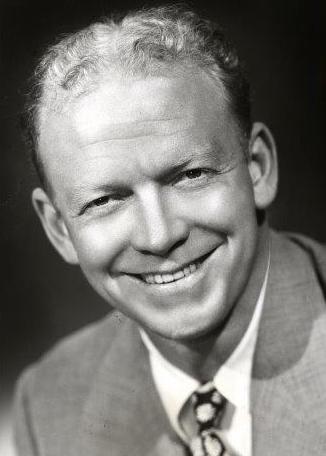Mississippi Today
Two New York legends highlight Mississippi Sports Hall of Fame Class of 2024


Two-time Super Bowl MVP Eli Manning heads the list of eight former athletes and sports figures who will be inducted into the Mississippi Sports Hall of Fame this weekend.
The MSHOF Class of 2024 will be enshrined Saturday night at the Clyde Muse Center on the Pearl campus of Hinds Community College.
Other 2024 inductees, in alphabetical order, include: Walter “Red” Barber, Baseball Hall of Fame broadcaster; Madison-Ridgeland Academy basketball coach Richard Duease, who has coached the second most basketball victories of any high school basketball coach in the U.S.; Laurel fisherman Paul Elias, 1982 Bassmasters Classic champion and winner of five other national pro tournaments; former Jackson State and NFL wide receiver Jimmy Smith, a five-time Pro Bowler and the Jacksonville Jaguars’ all-time leading receiver; Jackson native Savante Stringellow, a former world champion long jumper who prepped at Provine and was an All American at Ole Miss; tennis champion Becky Vest, another Jackson Provine product, who competed on the Virginia Slims Tour, at Wimbledon, and the U.S. and French Opens; and Florence’s Jimmy Webb, a Mississippi State All American defensive lineman and first-round NFL Draft choice who played seven years of pro football in San Francisco and San Diego.
While Manning, who follows his father Archie Manning into the Hall of Fame, headlines the 2024 inductees, he is not the only new inductee who gained A-list celebrity status in New York City. Barber, a Columbus native, did that more than half a century before Eli as a Baseball Hall of Fame broadcaster for the Brooklyn Dodgers and New York Yankees among other Major League teams.
Vin Scully, perhaps the most beloved baseball announcer ever, counted Barber as a mentor and an inspiration. Scully called Barber “the consummate reporter,” and “perhaps the most literate sports announcer I ever met.” Scully also called Barber “a profound influence on my life and a major reason for any success that I might have had in this business.”

Barber, who died in 1992 at the age of 84, was one of the first two broadcasters inducted into the Baseball Hall of Fame at Cooperstown. The New York Times memorialized Barber thusly: “During his 33-year career as a play-by-play announcer, Mr. Barber, the first regular baseball radio announcer in New York, became the recognized master of his profession, delighting millions of fans with his folksy expertise and influencing and inspiring a generation of broadcasters.”
Much later in life, Barber became a popular weekly contributor to National Public Radio. He also authored seven books and narrated numerous TV programs and documentaries.
Brief bios of each inductee follow:
- Red Barber was born in Columbus, where he lived his first 10 years. His family left the state but his rich, Southern accent stayed with him throughout his Hall of Fame broadcasting career. He broke into Major League Baseball with the Cincinnati Reds and later famously broadcast the games of the Brooklyn Dodgers and New York Yankees. He and Mel Allen were the first two broadcasters inducted into the National Baseball Hall of Fame at Cooperstown.
- Richard Duease, born and raised Indianola, attended Mississippi State where he first majored in business, planning to eventually run his family’s two department stores in the Delta. Instead, he went into coaching. That was 48 years, 1,801 victories and 33 state championships ago. “I can’t think of a greater honor than being inducted into the Mississippi Sports Hall of Fame,” Duease has said.
- Paul Elias said he was too small to play football, was “pretty good” at baseball but “was really, really good” at fishing while growing up in Laurel. “I praise the Lord every day for allowing me to make a good living doing what I love to do,” Elias, a Southern Miss graduate, said. He turned pro in 1979 and won the Bassmasters Classic in Montgomery in 1982. Twenty-six years later, he set a record that still stands for the largest four-day five-bass limit of 132 pounds, 8 ounces in a tournament at Lake Falcon in Texas.
- Eli Manning follows his father, Archie, into the MSHOF, just as he followed him to Ole Miss. During his time at Oxford, he set or tied 47 records to become the most honored offensive player in school history. He was the first player selected in the 2004 NFL Draft and played 16 years for the New York Giants. His jersey No. 10 has been retired by both Ole Miss and the Giants. In 2016, he was chosen winner of the NFL’s Walter Payton Man of the Year Award, named after another Mississippi Sports Hall of Famer. Manning will enter the MSHOF in his first year of eligibility for the honor.
- Jimmy Smith earned his nickname “Silk” at Callaway High School for how he made so many big plays so gracefully and with seemingly little effort. He then starred at Jackson State and began his professional career as a second round draft choice of the Dallas Cowboys. But he became one of the game’s most productive receivers with the Jacksonville Jaguars, for whom he caught 862 passes, including 67 for touchdowns. He is in the Jaguars’ Ring of Honor but considers his MSHOF induction “my greatest honor, something I have wanted for a long, long time.”
- Savanté Stringfellow played basketball and ran track at Provine, where he caught the eye of MSHOF track coach Joe Walker, then the coach at Ole Miss. He claimed three NCAA Championships as a Rebel All American became a U.S Olympian and follows in a long line of so many remarkable Mississippi long jumpers, including Hall of Famers Ralph Boston, Larry Myricks, Brittney Reese and Willye B. White. “I don’t know what it is about Mississippi and the long jump, but I’m just glad to be a part of it,” said Stringfellow, whose son, Kennedy, is a promising freshman long jumper and sprinter at Mississippi State.
- Becky Vest, another Jackson native and Provine grad, won five high school state tennis championships, two while still in junior high. She played collegiately at Trinity (Texas) University where she was a national champion. After college, she competed internationally as a professional and has become an acclaimed teacher. She follows her mother, Dorothy Vest, as the first mother/daughter combo in the Mississippi Sports Hall of Fame.
- Jimmy Webb of Florence became one of the greatest defensive players in Mississippi State football history, a consensus All American in the early-to mid-1970s. A first round draft choice, he also starred in the NFL with both the San Francisco 49ers and San Diego Chargers. At State, he studied veterinary medicine, preparing for his post-football career as a veterinarian and a cattle rancher. “I have been so blessed,” Webb said. “I appreciate this state so much and am so thankful for his honor. At my age, the honors don’t seem to come around that much any more.”
Hall of Fame weekend festivities begin Friday night’s Drawdown of Champions at 6 p.m. at the Sheraton Flowood Hotel and Convention Center, which will include silent and live auctions and a $5,000 drawdown. The public will have an opportunity to meet the inductees Saturday morning (9:30-11-30 a.m.) at the Mississippi Sports Hall of Fame and Museum. For more information, call 601 982-8264.
This article first appeared on Mississippi Today and is republished here under a Creative Commons license.![]()
Did you miss our previous article…
https://www.biloxinewsevents.com/?p=380210
Mississippi Today
1964: Mississippi Freedom Democratic Party was formed
April 26, 1964

Civil rights activists started the Mississippi Freedom Democratic Party to challenge the state’s all-white regular delegation to the Democratic National Convention.
The regulars had already adopted this resolution: “We oppose, condemn and deplore the Civil Rights Act of 1964 … We believe in separation of the races in all phases of our society. It is our belief that the separation of the races is necessary for the peace and tranquility of all the people of Mississippi, and the continuing good relationship which has existed over the years.”
In reality, Black Mississippians had been victims of intimidation, harassment and violence for daring to try and vote as well as laws passed to disenfranchise them. As a result, by 1964, only 6% of Black Mississippians were permitted to vote. A year earlier, activists had run a mock election in which thousands of Black Mississippians showed they would vote if given an opportunity.
In August 1964, the Freedom Party decided to challenge the all-white delegation, saying they had been illegally elected in a segregated process and had no intention of supporting President Lyndon B. Johnson in the November election.
The prediction proved true, with white Mississippi Democrats overwhelmingly supporting Republican candidate Barry Goldwater, who opposed the Civil Rights Act. While the activists fell short of replacing the regulars, their courageous stand led to changes in both parties.
This article first appeared on Mississippi Today and is republished here under a Creative Commons Attribution-NoDerivatives 4.0 International License.![]()
Mississippi Today
Mississippi River flooding Vicksburg, expected to crest on Monday
Warren County Emergency Management Director John Elfer said Friday floodwaters from the Mississippi River, which have reached homes in and around Vicksburg, will likely persist until early May. Elfer estimated there areabout 15 to 20 roads underwater in the area.
“We’re about half a foot (on the river gauge) from a major flood,” he said. “But we don’t think it’s going to be like in 2011, so we can kind of manage this.”
The National Weather projects the river to crest at 49.5 feet on Monday, making it the highest peak at the Vicksburg gauge since 2020. Elfer said some residents in north Vicksburg — including at the Ford Subdivision as well as near Chickasaw Road and Hutson Street — are having to take boats to get home, adding that those who live on the unprotected side of the levee are generally prepared for flooding.



“There are a few (inundated homes), but we’ve mitigated a lot of them,” he said. “Some of the structures have been torn down or raised. There are a few people that still live on the wet side of the levee, but they kind of know what to expect. So we’re not too concerned with that.”
The river first reached flood stage in the city — 43 feet — on April 14. State officials closed Highway 465, which connects the Eagle Lake community just north of Vicksburg to Highway 61, last Friday.

Elfer said the areas impacted are mostly residential and he didn’t believe any businesses have been affected, emphasizing that downtown Vicksburg is still safe for visitors. He said Warren County has worked with the U.S. Army Corps of Engineers and the Mississippi Emergency Management Agency to secure pumps and barriers.
“Everybody thus far has been very cooperative,” he said. “We continue to tell people stay out of the flood areas, don’t drive around barricades and don’t drive around road close signs. Not only is it illegal, it’s dangerous.”
NWS projects the river to stay at flood stage in Vicksburg until May 6. The river reached its record crest of 57.1 feet in 2011.




This article first appeared on Mississippi Today and is republished here under a Creative Commons Attribution-NoDerivatives 4.0 International License.![]()
Mississippi Today
With domestic violence law, victims ‘will be a number with a purpose,’ mother says
Joslin Napier. Carlos Collins. Bailey Mae Reed.
They are among Mississippi domestic violence homicide victims whose family members carried their photos as the governor signed a bill that will establish a board to study such deaths and how to prevent them.
Tara Gandy, who lost her daughter Napier in Waynesboro in 2022, said it’s a moment she plans to tell her 5-year-old grandson about when he is old enough. Napier’s presence, in spirit, at the bill signing can be another way for her grandson to feel proud of his mother.
“(The board) will allow for my daughter and those who have already lost their lives to domestic violence … to no longer be just a number,” Gandy said. “They will be a number with a purpose.”
Family members at the April 15 private bill signing included Ashla Hudson, whose son Collins, died last year in Jackson. Grandparents Mary and Charles Reed and brother Colby Kernell attended the event in honor of Bailey Mae Reed, who died in Oxford in 2023.
Joining them were staff and board members from the Mississippi Coalition Against Domestic Violence, the statewide group that supports shelters and advocated for the passage of Senate Bill 2886 to form a Domestic Violence Facility Review Board.
The law will go into effect July 1, and the coalition hopes to partner with elected officials who will make recommendations for members to serve on the board. The coalition wants to see appointees who have frontline experience with domestic violence survivors, said Luis Montgomery, public policy specialist for the coalition.
A spokesperson from Gov. Tate Reeves’ office did not respond to a request for comment Friday.
Establishment of the board would make Mississippi the 45th state to review domestic violence fatalities.
Montgomery has worked on passing a review board bill since December 2023. After an unsuccessful effort in 2024, the coalition worked to build support and educate people about the need for such a board.
In the recent legislative session, there were House and Senate versions of the bill that unanimously passed their respective chambers. Authors of the bills are from both political parties.
The review board is tasked with reviewing a variety of documents to learn about the lead up and circumstances in which people died in domestic violence-related fatalities, near fatalities and suicides – records that can include police records, court documents, medical records and more.
From each review, trends will emerge and that information can be used for the board to make recommendations to lawmakers about how to prevent domestic violence deaths.
“This is coming at a really great time because we can really get proactive,” Montgomery said.
Without a board and data collection, advocates say it is difficult to know how many people have died or been injured in domestic-violence related incidents.
A Mississippi Today analysis found at least 300 people, including victims, abusers and collateral victims, died from domestic violence between 2020 and 2024. That analysis came from reviewing local news stories, the Gun Violence Archive, the National Gun Violence Memorial, law enforcement reports and court documents.
Some recent cases the board could review are the deaths of Collins, Napier and Reed.
In court records, prosecutors wrote that Napier, 24, faced increased violence after ending a relationship with Chance Fabian Jones. She took action, including purchasing a firearm and filing for a protective order against Jones.
Jones’s trial is set for May 12 in Wayne County. His indictment for capital murder came on the first anniversary of her death, according to court records.
Collins, 25, worked as a nurse and was from Yazoo City. His ex-boyfriend Marcus Johnson has been indicted for capital murder and shooting into Collins’ apartment. Family members say Collins had filed several restraining orders against Johnson.
Johnson was denied bond and remains in jail. His trial is scheduled for July 28 in Hinds County.
He was a Jackson police officer for eight months in 2013. Johnson was separated from the department pending disciplinary action leading up to immediate termination, but he resigned before he was fired, Jackson police confirmed to local media.
Reed, 21, was born and raised in Michigan and moved to Water Valley to live with her grandparents and help care for her cousin, according to her obituary.
Kylan Jacques Phillips was charged with first degree murder for beating Reed, according to court records. In February, the court ordered him to undergo a mental evaluation to determine if he is competent to stand trial, according to court documents.
At the bill signing, Gandy said it was bittersweet and an honor to meet the families of other domestic violence homicide victims.
“We were there knowing we are not alone, we can travel this road together and hopefully find ways to prevent and bring more awareness about domestic violence,” she said.
This article first appeared on Mississippi Today and is republished here under a Creative Commons Attribution-NoDerivatives 4.0 International License.
-

 News from the South - Florida News Feed6 days ago
News from the South - Florida News Feed6 days agoJim talks with Rep. Robert Andrade about his investigation into the Hope Florida Foundation
-

 News from the South - Alabama News Feed5 days ago
News from the South - Alabama News Feed5 days agoPrayer Vigil Held for Ronald Dumas Jr., Family Continues to Pray for His Return | April 21, 2025 | N
-

 Mississippi Today6 days ago
Mississippi Today6 days ago‘Trainwreck on the horizon’: The costly pains of Mississippi’s small water and sewer systems
-

 News from the South - Florida News Feed5 days ago
News from the South - Florida News Feed5 days agoTrump touts manufacturing while undercutting state efforts to help factories
-

 News from the South - Texas News Feed5 days ago
News from the South - Texas News Feed5 days agoMeteorologist Chita Craft is tracking a Severe Thunderstorm Warning that's in effect now
-

 News from the South - Virginia News Feed5 days ago
News from the South - Virginia News Feed5 days agoTaking video of military bases using drones could be outlawed | Virginia
-

 News from the South - Florida News Feed5 days ago
News from the South - Florida News Feed5 days agoFederal report due on Lumbee Tribe of North Carolina’s path to recognition as a tribal nation
-

 News from the South - Arkansas News Feed6 days ago
News from the South - Arkansas News Feed6 days agoAs country grows more polarized, America needs unity, the ‘Oklahoma Standard,’ Bill Clinton says















































